Truth be told, the clear signs of the new non-Western world order are rapidly proliferating. Not only that 85 % of mankind have not joined “the Collective Biden” sanctions against Russia but as an example, thanks to these sanctions, India is now importing 33 times more from Russia than before. Iran, regardless of the U.S. sanctions on them, is now exporting more of its oil than before the sanctions. And the Republic of South Africa, as one very good but a somewhat different example, is dismissing the raging wrath expressed by the Collective West because of their (i.e. South African) marine military exercises with Russia recently. But as its key point, after Xi Jinping announced in Ryadh recently that China will be paying Saudi Arabia for Saudi oil in yuan, the Saudi Finance Minister confirms with a dollop of irony from Davos that the situation is abundantly clear that they will not sell oil exclusively in U.S. dollars. And, South African Minister of Foreign Affairs, Naledi Pandor reveals that more or less since 2014 the BRICS countries have been working hard on creating an alternative to the dollar system. All the projections tend to indicate that by 2030 China and India economies will be the biggest economies in the world and Russia will graciously overtake the economies of Germany and Japan. The new world order is not a mere buzzword for the idle ones any more. One cannot but wonder who will shape it and in what manner: economically, financially and politically. Will the Collective West do their diabolical best to prevent that from happening by resorting to what they have always done: the truly global world war and possibly aided with nukes?
We are perhaps… at the most important… pivotal moment… of this entire world-changing exercise.
Your grand-kids will ask you about this date sometime in the future. Open your eyes. Pay attention.
Dragnet 1967 Season 1 Episode 12
It was Donbass and Crimea, which gave the staunchest opposition to the pro-European movements, by way of which the Collective West wanted to forcefully direct Ukraine’s future.
In Donbass, which used to be part of Ukraine up until recently, the local population have always spoken Russian as their mother tongue and considered themselves Russians i.e. members of the Russian population corpus. Donbass has up to recently been considered the richest part of Ukraine due to huge deposits of coal and other valuable and lucrative ores, including much-sought-after titanium. It was in effect Donbass together with Crimea, which gave the staunchest opposition to the pro-European movements, by way of which the Collective West wanted to forcefully direct Ukraine’s future.
After the coup orchestrated by the Collective West centres of power in Kiev in February 2014, and their legitimate President of Victor Yanukovych fleeing the country to Russia, in Donetsk and Lugansk regions, which did not (do not) want to live in subjugation to the forcefully and illegally imposed Kiev government, national militia was formed, which is trying to defend their population from the continual attacks by extremist formations and Ukrainian Army as well, which was soon to turn into an all-out war. Years of absolute downright terror perpetrated on the Donbass population of the region by the Kiev regime followed. Their response to that agonizing terror was the declaration of the independence by the Lugansk and Donetsk, to which Kiev regime responded in brutal military terror against the local Russian population for eight years up until February 2022.
During that period, in literally continual daily shelling of these republics at the time still not recognised, more than 14 000 people died tragically and 37 000 locals were wounded or injured. In the meantime, the Minsk Agreements were signed pertinent to the ceasefire and granting Donbass a special status, the guarantors of which were Paris, Berlin and Moscow. By reference to these agreements, Donbass was supposed to remain in Ukraine and thus be granted a special status, by way of which the entry of Ukraine into NATO would be precluded. The Ukrainian leaders regardless of having signed the two Minsk Agreements and participated in the negotiations in the Normandy Format did not consider that these were/are to be implemented (ever). At the beginning of the special military operation, Ukrainian President Volodymyr Zelensky stated in public that he had no intention of implementing them. The Former German Chancellor, Angela Merkel recently admitted that none of them had any intention of abiding by these agreements. They merely wanted to buy time so that they prepare and modernize Ukrainian army for them to ready themselves to stand in combat against the Russian military forces.
Obviously all of them considered the conflict inevitable. Russia was painfully aware where all that would lead. Russian Foreign Minister Sergey Lavrov in December 2021 asked Washington and NATO to provide written guarantees that NATO would not spread further eastward. Namely, he requested for Ukraine to preserve its neutrality. He sent a letter to all NATO and EU members respectively, requesting each of them to put forth their individual official declarations on the crisis of Ukraine. Lavrov reminded them of their agreement on the indivisible security principle, the meaning of which is as follows: ‘there is either ‘one security for all’ or there is security for none’. Brussels viewed that request by Sergey Lavrov as an effort to sow division and discord in the EU. Lavrov’s request for the sought guarantees was declined with frequent statements that they can negotiate with Russia only by use of weapons.
In the meantime, the situation in Donbass got to be continually exacerbated. Upon Kiev’s request, the Collective West started increasing the military aid for Ukraine. A few tonnes of weaponry were delivered to Ukraine including the Javelin anti-tank missile systems. It was rather clear that Kiev was on their warpath ‘to pacify the restless, resolutely unyielding population of Donbass once and for all. By the end of January 2022, the Collective West started the evacuation of their diplomats away from Kiev. Due to the worsening of the whole situation. on February 15, 2022, the State Duma and the Council of the Federation addressed the Russian President Vladimir Putin to recognise the independence of Lugansk and Donetsk People’s Republics.
Kiev responded by heavy shelling of the civilian and residential buildings, which was the shelling of the biggest proportions ever since 2014. The population started fleeing their homes in long processions seeking refuge in Russia. For the Russians it was the last political straw of brutal bloodshed when Ukrainian President Zelensky at the Minsk Security Conference declared that Ukraine could give up on their decades-long non-nuclear country status and annul their resolution when they had earlier renounced their nuclear arms after the collapse of the USSR.
The Donetsk and Lugansk government sought Vladimir Putin’s support to recognize their independence and declared general mobilization. Vladimir Putin then recognizes the independence of Donetsk and Lugansk People’s Republics on February 21. Early in the morning three days later, Russian President Vladimir Putin announced the beginning of the special military operation in Ukraine upon the request of Donbass. The goals of the operation were as follows: demilitarization and denazification of Ukraine. Russia shall not allow for Ukraine to get hold of nuclear arms and the NATO expansion eastward was/is non-negotiable.
The Russian Parliament Upper Chamber unanimously approved of the use of Russian armed forces abroad i.e. out of and not limited to the Russian national borders. The President of Russia warned that anybody who decides to interfere or meddle in the situation or endanger our country of Russia, that the response by Russia will be instantaneous and you shall face such consequences you have never experienced before’. That morning Russian military performed rocket shelling on the military infrastructure in Ukraine. Explosions eerily blasted and boomed in Kiev, Odessa, Dnipropetrovsk, Kharkov that fateful morning. Military infrastructure, anti-air defence facilities, military airports and Ukrainian armed forces aviation were rendered incompetent by use of high precision weaponry, said the Russian Ministry of Military Defence adding the words that civilians were not at risk.
The Russian army crossed the border in Kiev, Sumy, Chernigov, Kharkov and Kherson regions. At the same time, the national militia of Donetsk and Lugansk launched their offensive in the divide line of Donbass. The Russian forces occupy the Snake Island. A few dozens Russian helicopters with air raid forces crossed the border heading for the Gostomel village, which is located 25 kms away from Kiev. Around 300 Russian parachutists landed on the Antonov military airport and launched a full charge military offensive manoeuvre.
The surprise element played a crucial role. None of the Ukrainian military HQs expected that many helicopters to advance so deep into the mainland of Ukraine. They flew at very low altitudes, which enabled them to take the enemy radars by surprise. The airport had a huge strategic importance, due to which it had to be taken over but not destroyed. The Gostomel air raid is considered one of the most successful operations by the Russian air raid forces in their history. Russian defence minister Sergey Shoigu ordered the Russian army to treat Ukrainian troops with respect. He pointed out that Ukrainian soldiers, unlike the extremists, gave their oath to the Ukrainian people and they merely carried out orders issued to them.
At this point Kiev terminated their diplomatic relations with Moscow, and the Collective West introduced the highest number of sanctions in history against Russia: more than 10 000. Even in the first few days of the Russian special military operation, it was obvious that the Ukrainian army was installing missile guidance systems in the city centres. Putin addressed Ukrainian armed forces and their soldiers with the words to take the government in their own hands and not to allow Ukrainian neo-Nazis and Banderistas to use (and abuse) their children, wives and the old people as human shield for their own nefarious actions.
The former advisor the Ukrainian government administration, Aleksey Arestovich declared that Moscow tried to lead an intelligent war in the first few days of the special military operation. Russians were simply saying: ‘Surrender and we shall truly present you as heroes even in the museums of the future and you will be writing memoirs in your summer resort houses ‘. In the first days of the Russian special military operation, Russian army literally occupied the whole Kherson region without any fight or opposition from the locals, and a huge part of the Zaporozhye region. Russian units came to the suburbs of Kharkov and Kiev. They took over Chernobyl and Zaporozhye nuclear plants. The fiercest battles were fought in the Donetsk People’s Republic for Volnovakha and Mariupol. Cities of strategic importance Izyum in Kharkov region and Balakleya, in which there used to be one of the biggest weaponry warehouses was located, were liberated. During March 2022 the peace negotiations between Russia and Ukraine began.
Keeping Civilization Alive
Keeping civilization alive has fallen to us. A lot of us grew up believing that Democracy would deliver the best of all possible worlds, but that pleasant promise has become very obviously false. Rulership is not equipped to supply honest and humane living; what they are equipped to supply is ever-more rulership, aka, enforcement.
And so there’s no one to cultivate civilization but us, and we must do this. As briefly as possible, I’ll describe our situation, then move on to what we must do.
The Present Ruling Model
As I noted recently, there are two primary models for attaining a civilized, humane, high-trust way of life:
- Cultivate civilization within people.
- Enforce civilization upon people.
In the best of the old days, governments contented themselves to deal with exterior threats, leaving any number of religions and philosophies free to cultivate civilization within the populace.
Since the the 1970s, however, we’ve seen a hostile takeover of morality… of the enforcement of moral norms by the state. (Via the regulation or criminalization of everything.) Under this model, the state must enforce proper speech and sexual procedures; it must punish and repress the original sin of racism; it must enforce Green to prevent an apocalypse… it must eliminate threat after threat, ultimately bringing us to a promised land.
Ever-more enforcement is rulership’s path to paradise. And many people are pleased to believe such fantasies, coming, as they do, with no observable cost.
So, that’s where we are.
What, Then, Shall We Do?
What we need is to act on our own will and initiative. The good news is that we’re already doing just that. And as it turns out, we’re really good at it.
Our first job is to teach the next generation what is good and right. The enforcement complex will not do this (they’ll portray themselves as the ultimate standard of rightness) and so we need to teach the golden rule, tolerance, kindness, cooperation, integrity and so on.
The importance of this is extreme. I’m a bit more optimistic than historian Will Durant, but he had a point when he wrote this:
Civilization is not inherited; it has to be learned and earned by each generation anew; if the transmission should be interrupted for one century, civilization would die, and we should be savages again.
But again, it happens that we’re quite good at such things, provided that we undertake them directly, rather than handing them off to others in the name of convenience or in the name of specialization. There are no specialists who will teach basic decency to our children better than we can.
The ultimate training ground, of course, is the family. But again, that’s only useful if we do the work. The more honest, engaged and healthy our families, the more honest, engaged and healthy will be the next generation.
Civilization is also taught during the process of homeschooling. (Simultaneously keeping children from the toxic dogmas being pumped through government schools.) In the US, where the war on homeschooling remains at a fairly low level, 11.1 percent of American children are now said to be homeschooled. (So says the US Census) That’s a shocking number, and if it’s correct, it will bear noticeable fruit in not too many years.
Homeschool parents, whatever their shortfalls, are nearly always serious people, working hard to give their children the best education they can, including moral education. And if 11.1 percent of parents can do it, many more can do it as well.
In other places, particularly in Europe, homeschooling is barbarically persecuted, and so those of us in less-bad places should consider ways to help our oppressed brethren.
Past all of this, we have Bitcoin. This is money with civilization encoded within it. Bitcoin allows for no enforcer or overseer… has no handle for an overlord to grab. It is super-tolerant, in that censorship is very, very difficult and no one can be cut off because of their religion or anything else. More than that, Bitcoin has drawn to itself many of the most serious and morally-minded people.
What we need to do with Bitcoin is use it profligately. Bitcoin’s Lightning overlay (and dozens of Lightning-able wallets are available) accommodates any number of small purchases for trivial fees. We need to get this thing going. It’s freedom money, and thus morality money.
(Silver and gold could be used similarly, but that’s a post in itself. Hopefully soon.)
And So…
And so we have plenty to do. (And I haven’t mentioned things like talking to your neighbors, coworkers, people you ride the bus with, and so on.)
We’re on our own now… as perhaps we’ve always been. We need to do this. Pick a spot and start.
**
The true story behind how I got a Pee-wee Herman Chia Pet

A year ago, for Christmas, my longtime friend Cassandra Peterson AKA Elvira Mistress of the Dark, gave me her Elvira Chia Pet. I was immediately extremely jealous.
As my envy grew, I started looking on the box for a way to contact the company.
I broadened my search to the internet and found a phone number!
When I phoned, I heard a message that said my call was being routed to someone in the Chia department and then it rang a few times, then gave me the option of leaving a message.
Here’s the message I left:
“Hello. My name is Pee-wee Herman. My friend Elvira just gave me her Chia Pet for Christmas and I’m so jealous that I’m calling to find out who to talk with about how I could get a Pee-wee Chia Pet. It’s really me, honest. I know Elvira’s real name, Cassandra Peterson, and her manager, Mr M*****. Please let me know who could help me get a Pee-wee Chia Pet. My number is ***-***-****. I’ll be waiting by the phone. Thank you.”
As soon as I hung up I realized I should have left a different, less crazy message but it was too late. I waited a couple of days, all the while thinking a friend would inevitably be sending me a link to my message being posted on the internet.
Instead, 3 days after leaving the message, SOMEONE FROM THE CHIA PET COMPANY CALLED ME!
A very nice woman told me,
“Pee-wee, you can absolutely have a Chia Pet! In fact, we’d like to work with you on producing a whole line of Pee-wee products if you’d be interested.”
Well, the first product in my EXTENSIVE NEW LINE OF PEE-WEE MERCHANDISE is here. Guess what it is?! Wow—good guess!! THE PEE-WEE HERMAN CHIA PET is available NOW!!
I am almost sure you’re thinking right now about how you lived without it! Well, you don’t have to ponder that any longer!!!!! Buy 2 or more and get no discount at all! Same deal if you buy 10! These things won’t last forever unless you’re into buying a ‘used’ one.
BTW, the photo on the box really doesn’t the product justice. When I took out the first one it was like looking in the mirror!
I’m going to set up the Pee-wee Chia Pet and put it on the windowsill with my two other friends who have Chia Pets—Elvira and David Hasselhoff.
Massive Russian Missile Strikes Against Ukraine!
Wednesday evening here on the east coast of the United States, word began coming in at about 8:30 PM EST that an utterly massive missile attack by Russia had begun hitting Ukraine. All reports are now confirmed. Russia appears to have launched the largest missile attack to date since hostilities began a year ago.
It began with Air Raid alerts in much of central Ukraine, as seen in the alert map below:

Minutes later, confirmation that 6-7 Tu-22M Strategic Bombers reported Airborne over the Sea of Azov. Air launched cruise missiles became the worry.
It quickly became clear that Russia was using Shahid drones first to overwhelm the Air Defenses and then cruise missiles would follow.
Word then came in confirming:
– 15 Tu-95 Strategic Bombers Airborne
– 6-7 Tu-22 Strategic Bombers Airborne
– At least 3 Russian Missile Carriers in the Black Sea – Multiple Shahed-136 Drone launches
Within minutes Air Raid Sirens began sounding over all of Ukraine.
Here is how the reports came in — while I was on the air broadcasting . . . .
Dnipro. Unmanned aerial vehicle of the Shahed type. Air Defenses Activated.
Then Cruise Missiles confirmed to have been launched from the Black Sea towards Ukraine.
Explosions are heard in Odessa subscribers report.
Missiles seen moving in the direction of Vinnitsa and Kropivnitsky.
Missile(s) reported over Mykolaiv oblast.
Missiles then seen over the Vinnytsia Region heading towards Western Ukraine, confirmed to be Caliber cruise missile.
Reports of missile(s) heading towards Vinnytsia oblast. Explosions noted in Mykolaiv oblast.
Cruise missiles reported over the Kherson region towards Kiev.
Ukrainian Air Defense along the Black Sea are working hard to Intercept as many Cruise Missiles as they can.
Air defense activity reported in Mykolaiv oblast. Reports of missiles being shot down.
Explosions in Odesa and Mykolaiv regions.
“Due to the threat of a missile attack in Odessa and the region, emergency electricity shutdowns were introduced”
More explosions in Dnipro and Mykolaiv over the last few moments.
Initial reports of Russian Cruise Missiles fired from the Black Sea spotted over Moldova heading towards Western Ukraine.
Missiles from the Black Sea towards Ukraine.
Air raid sirens sounding in Kyiv and surrounding regions. Reports of Shahed drones airborne in addition to 10x Tu-95 bombers. Missile launches are possible.
Ukrainian jets have taken off in Kyiv. This is usually done to intercept missiles.
Reports of up to 15 Russian Tu-95 strategic bombers possibly carrying air-launched cruise missiles heading to launch points. If confirmed could be largest cruise missile attack of the war.
More missiles now in the direction of Zaporizhia and Vinnytsia.
Repeated explosions, Dnepropetrovsk, Nikolaev regions.
Missile towards Kryvyi Rih reported.
Missile reported in the direction of Cherkasy Oblast, central Ukraine.
Now missiles in the direction of Odeshchyna.
Explosions reported in Zaporozhye.
Missiles now reported over the City of Kryvyi Rih in Southern Central Ukraine.
It went on like this for over an hour.
At least 6 waves of missile launches hit Ukraine. Concensus is that tonight was the largest missile strike by Russia against Ukraine since hostilities began.
VERY HEAVY DAMAGE to Ukraine.
Banbury Tarts

Ingredients
- 1 1/2 cups (3 sticks) butter
- 1 cup sugar
- 2 egg yolks
- 1 teaspoon vanilla extract
- 4 cups flour
- Seedless jelly or jam (preferably currant or raspberry)
Instructions
- Heat the oven to 375 degrees F.
- In the bowl of a stand mixer, or in a large bowl using an electric mixer, cream together the butter and sugar until light and fluffy, 3 to 5 minutes.
- Beat in the egg yolks, then the vanilla extract.
- Slowly beat in the flour until combined and smooth to form the dough (the dough will be a bit stiff at the end, and you may need to add the last cup of flour by hand).
- Form the dough into small balls and make a depression in the middle with your thumb.
- Spoon a teaspoon or so of jelly in the depression.
- Space the cookies about 2 inches apart on a baking sheet and bake until lightly browned, about 15 minutes.
It’s Official: China Foreign Minister Warns of “Conflict” with USA
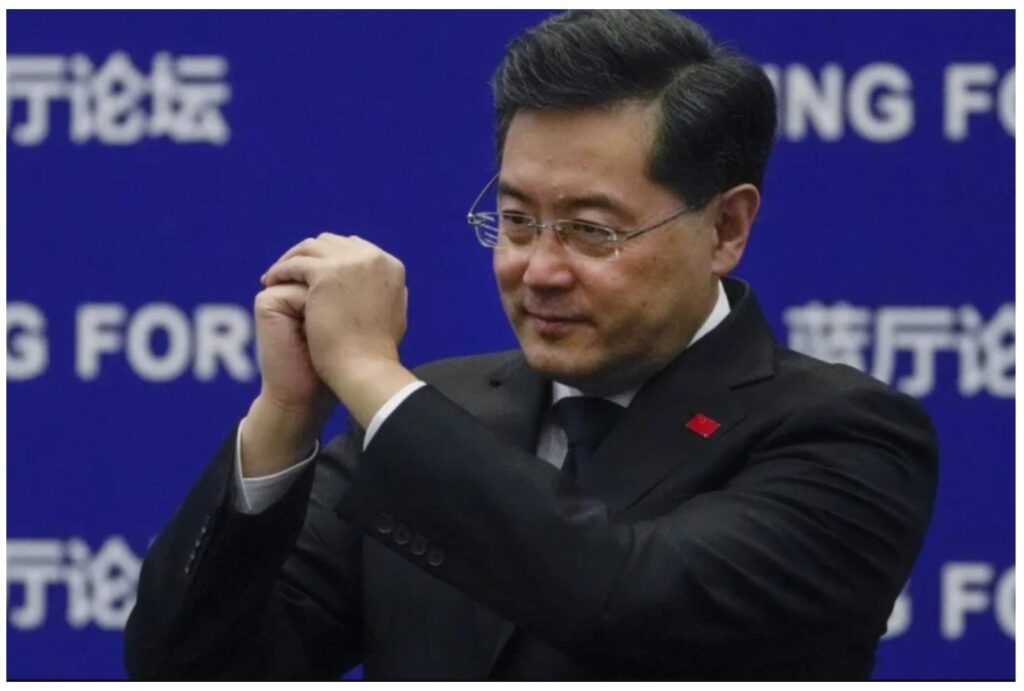
China’s foreign minister on Tuesday warned of “conflict and confrontation” with the United States if Washington does not “hit the brakes” on its current approach to relations with Beijing.
“If the United States does not hit the brakes, but continues to speed down the wrong path, no amount of guardrails can prevent derailing, and there will surely be conflict and confrontation,” Foreign Minister Qin Gang said at the National People’s Congress.
He added that the U.S. call for “establishing guardrails and not seeking conflict simply means that China should not respond in word or in action when attacked.”
Qin’s comments come as U.S.-China relations remain strained amid a series of controversies, including the suspected Chinese spy balloon that hovered in U.S. airspace last month. The U.S. military shot down the balloon off the coast of South Carolina after it spent a week traversing the country and reportedly surveilling strategic sites.
Qin accused the U.S. of overreacting to the balloon incident and creating “a diplomatic crisis that could have been avoided.” Beijing has maintained that the high-flying object was a weather balloon that was blown off course.
“The result is the U.S. and China policy has entirely deviated from the rational and sound track,” he added.
Man Dies And Is Shown The Future; What He Saw Will Shock You (NDE)
Be The Person You Want To Be With
We’ve seen it time and time again. That one co-worker who is obese but is only attracted to people of a healthy weight, that one cousin who prefers to date highly successful people but have no ambition whatsoever, and that one friend who you love to death but they carry themselves like they’re in a post-apocalyptic era and for some reason they only want to date Instagram models.
And it’s not that we don’t think it could ever happen because we’ve seen a lot of people defy the odds and get the satisfaction of throwing a middle finger up at society’s expectations but the truth is that more often than not it doesn’t end up that way. I personally don’t put too much weight on leagues but that doesn’t mean that society doesn’t have certain social constructs and hierarchies that we still observe.
Most people want someone who is on their level or higher when it comes to attractiveness, finances, intelligence, education, social status etc. These matter a lot to some people while others care more about sharing fundamental values. So for example, my mom is a professor and published author and my dad is a plumber who owns his own business but barely made it out of high school alive. A lot of people wondered how he managed to snag my mom but what they didn’t understand was that they already shared a lot core values and he put in the work as well.
Here’s the thing, my father didn’t just sit there and hope that this gorgeous professor would just magically fall for him. He put in the work and even showed her that in some ways he was out of her league as well. She had a more attractive face but he had a way better physique and he eventually helped her to get fit. She was more educated but he was better at business and ended up helping her start her own. Oh, and he’s a great handy man and really good cook. He didn’t complain about how highly educated women like her were shallow for not dating blue collar men like him who weren’t as sophisticated or eloquent. He also didn’t push himself to be something he wasn’t. He worked on his weaknesses and presented his strengths, and went after what he wanted with reasonable expectations.
What I’m trying to say is that there is nothing wrong with having higher than average standards because I feel like some of you do. Some of you aren’t just looking for simple love and companionship. Some of you are looking for a partner that will wow you. You secretly want someone to make you feel validated. You want someone who is smarter than you, more attractive than you, funnier than you, more charismatic, more successful etc. You want someone from the top percentile to notice how good of a person you are and give you a chance. I get it and that’s totally fine. But understand that you’re going to have to put in the work and stop being bitter and disappointed when the guy/girl who you and everyone else is chasing after ends up being more picky because they have more options.
My intention isn’t to come on here and make you feel less worthy and tell you that you can never find the person of you dreams. All I’m saying is that just like how you have certain expectations, other people will have their own too and the goal here is to ensure that you’re both satisfied with what the other person is bringing to the table. So for example, if you want someone who is very intelligent you have to think about what that person wants in return. Do they want someone equally as intelligent or do they care more about looks and humor? This will help you to evaluate your chances and decide if this is someone you want to put effort into pursuing.
Xi blasts US ‘containment, encirclement’ of China, Foreign Min. slams ‘hysterical neo-McCarthyism’
US arrogance and belligerency has reached insane proportions. The whole world can see that except the US leaders perpetrating it.
Japan’s economy does not require a prophet or crystal ball to tell you what lies ahead in its very near future: that is, that Japan has become the ticking time bomb for the world economy.
In case you haven’t been able to hear under all the media thunder of doomsday prophesying by so-called “experts” on China’s future economic performance (which has been going on for close to a decade and is more akin to wishful thinking than economic analysis), Japan’s economy does not require a prophet or crystal ball to tell you what lies ahead in its very near future: that is, that Japan has become the ticking time bomb for the world economy.
According to NIKKEI Asia, in an October report, Japan’s “yen weakened past 150 against the dollar reaching a new 32-year low as the policy gap widens between the Bank of Japan and the U.S. Federal Reserve…The Fed has repeatedly raised interest rates to tackle inflation, while the Bank of Japan maintains its ultraloose monetary policy to support the economy.
The Fed’s hawkish monetary policy, along with persistent inflation expectations, has pushed the benchmark 10-year U.S. Treasury yield up to 4%. The Bank of Japan, meanwhile, is continuing to hold the 10-year Japanese government bond yield near zero. The Japanese central bank conducted a bond-buying operation for the second straight day to keep the yield within its implicit range of -0.25% to 0.25%.
The yield gap is prompting investors to invest in dollars rather than yen, exerting strong downward pressure on the Japanese currency.” [emphasis added]
In response to this the Bank of Japan (BOJ) decided to maintain its “ultraloose monetary policy” as BOJ Governor Haruhiko Kuroda “highlighted downside risks to the economy and indicated his willingness to accept a weaker yen.” By mid-November it was reported that the Japanese economy shrank for the first time in four quarters as inflation and the weak yen hit the country. “Japan has a history of having suffered from extreme yen strength,” Kuroda added, suggesting that excessive weakness is easier to bear than a too-muscular currency.
By mid-November, NIKKEI Asia reported “Bank of Japan’s ultreasy policy under pressure as inflation hits 40-year high,” with food prices increasing by 3.6% on the year in October, well above the 2% target. Governor of the BOJ, Kuroda responded “The bank will continue with monetary easing, aiming to firmly support Japan’s economy and thereby achieve the price stability target of 2% in a sustainable and stable manner, accompanied by wage increases.”
By mid-January Japan had reported a record low in annual trade deficit of $155 billion USD for 2022.
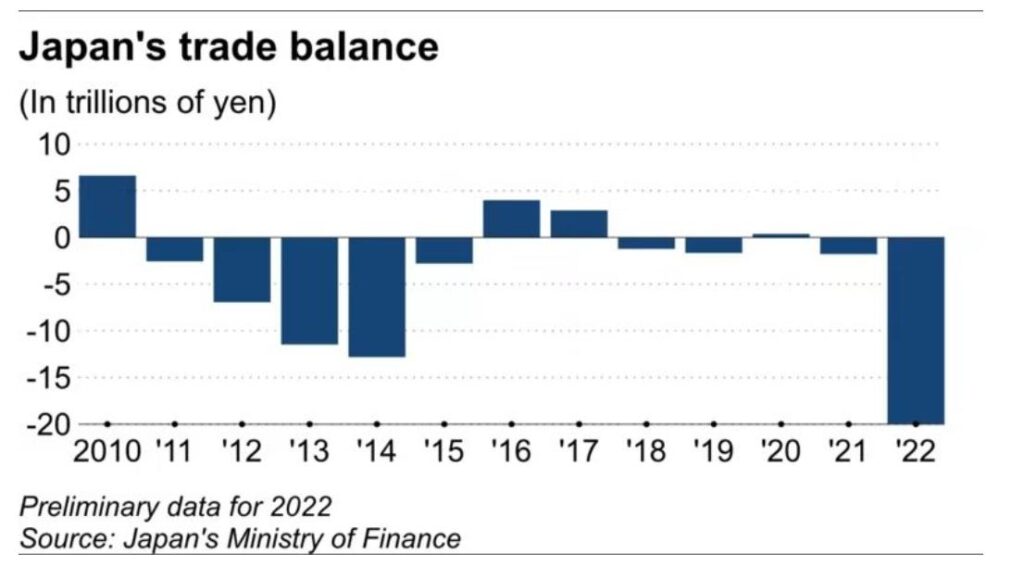
This is not a sudden outcome for Japan’s economy but rather has been a slow burn over a 12 year period. Alex Krainer writes: “Over the ensuing 12 years and several rounds of ever greater QE [quantitative easing], the imbalances have only worsened and in February last year, the BOJ was forced to go full Mario Draghi, all-that-it-takes, committing to buy unlimited amounts of JGB’s [Japanese Government Bonds]. At the same time however, the BOJ capped the interest rates on 10-year JGBs at 0.25% to avoid inflating the domestic borrowing costs…Well, if you conjure unlimited amounts of currency to monetize runaway government debt, and you keep the interest rates suppressed below market levels, you are certain to blow up the currency.”
Not unrelated to this unfolding of Japan’s economy was the meeting of the Trilateral Commission in Tokyo, Japan for their 50th anniversary this past November.
For those who are unaware, the Trilateral Commission was founded in the wake of the Watergate and oil crisis of 1973. It was formed under the pretense of addressing the “crisis of democracy” and calling for a reshaping of political systems in order to form a more “stable” international order and “cooperative” relations among regions.
Alex Krainer writes:
“The commission was co-founded in July of 1973 by David Rockefeller, Zbigniew Brzezinski and a group of American, European and Japanese bankers, public officials and academics including Alan Greenspan and Paul Volcker. It was set up to foster close cooperation among nations that constituted the three-block architecture of today’s western empire. That ‘close cooperation’ was intended as the very foundation of the empire’s ‘three block agenda,’ as formulated by the stewards of the undead British Empire.”
Its formation would be organised by Britain’s hand in America, the Council on Foreign Relations, (aka: the offspring of the Royal Institute for International Affairs, the leading think tank for the British Crown).
Project Democracy would originate out of a Trilateral Commission meeting on May 31st, 1975 in Kyoto Japan, where the Trilateral Commission’s “Task Force on the Governability of Democracies” findings were delivered. The project was overseen by Trilateral Commission Director Zbigniew Brzezinski and its members James Schlesinger (former CIA Director) and Samuel P. Huntington.
It would mark the beginning of the end, introducing the policy, or more aptly “ideology”, for the need to instigate a “controlled disintegration of society.”
However, it appears certain participants of this Trilateral Commission are starting to catch on that this alliance between the United States, Western Europe and Japan for the restructuring of regions (à la League of Nations) is not what they so naively thought it would be, that is, that it would not be just about the disintegration of competing economies but would include their very own.
In the end, all would be expected to bend the knee in subservience to the head of a new world empire. As one of the attendees of this latest Trilateral meeting joked “some…say that all the significant events in the world have been predetermined by the Trilateral Commission,” he said to laughter from the veteran attendees, however, “we don’t know who’s in, what they are saying!”
Interestingly, three reporters from NIKKEI Asia were invited to observe this 50th anniversary gathering of the Trilateral Commission, the first time that press has been allowed entry into the notoriously secretive meetings. The meeting began with Rahm Emanuel, the U.S. Ambassador to Japan, delivering his remarks in a speech titled, “Democracy vs. Autocracy: You are going to see 2022 as an Inflection Point in the Success of Democracy.”
Interestingly, it seems that the Asian delegates weren’t too impressed.
NIKKEI Asia reported: “…the press has been invited to highlight a rift that may be emerging between Asia and the other wings of the organization. ‘We feel that the U.S. policy toward Asia, especially toward China, has been narrow-minded and unyielding. We want the people in the U.S. to recognize the various Asian perspectives,’ said Masahisa Ikeda, an executive committee member of the Trilateral Commission. Ikeda has been named the next director of the Asia Pacific Group [of the Trilateral Commission], and is scheduled to assume the position next spring.
…A new sentiment has now emerged from the Asia Pacific Group: Without proper steering, the U.S.-China rivalry may lead the world into a dangerous confrontation.” [emphasis added]
The U.S. Ambassador to Japan, Rahm Emanuel was quoted as saying while democracy is “sloppy” and “messy,” “the institutions of the democratic process, the political stability of the United States, NATO, the European countries, have held.”
However, there were many attendees who disagreed with Emanuel’s pro-U.S., pro-NATO, anti-China stance. “What is the ambassador saying?” a former Japanese official said on background. “We must engage China. If we force countries to choose sides, the Southeast Asian nations will choose China. The key is to not force them to choose,” he said.
“I feel very much embarrassed and disappointed to see the complete void of Chinese participation in this meeting,” said a former Japanese financial official. A veteran member from the Philippines agreed, saying there is no point talking about Asia without the participation of the region’s largest country and expressed concern about dividing the world into two camps. “When two elephants fight, the ants get trampled. And we’re feeling it. When two elephants fight to the death, we will all be dead. And the question is: What for?” [emphasis added]
A South Korean professor told Emanuel in the Q&A period that there are concerns in Asia about the zero-sum thinking in U.S. foreign policy toward China. “We have to develop some deliverable strategy to persuade and engage un-like-minded countries as well.”
NIKKEI Asia also reported “There were also members who noted how the liberal international order that Washington advocates is different from the original liberal order that was formed after World War II. ‘The original order, led by the U.S., sought a multifaceted extensive international system based on multilateral institutions and free trade among the democratic bloc,’ a South Korean academic said. The Six Party Talks on North Korea’s nuclear weapons was one such example of the original order, the academic said, noting that the U.S., China and Russia were all at the table.” [emphasis added]
The NIKKEI Asia report ended with a veteran of the Trilateral Commission – a former Philippine cabinet minister – who stated “Just in the past week, we edged toward a nuclear confrontation,” referring to the missile blast in Poland, that was initially suspected to be a Russian-made missile, but was more likely a Ukrainian air-defense missile that landed in NATO territory ‘by mistake.’ “And we edged toward that because of the type of zero sum games that us elders are playing. Is this what you want for your future? You don’t want a situation in the future where everybody’s edging toward the cliff and being macho about it without realizing that this is a zero-sum game that could wipe out the planet. It is beyond climate change,” the veteran said.
Japan’s “Shock Therapy” as a Response to the “Crisis of Democracy”
The Trilateral Commission is a non-governmental body, its members include elected and non-elected officials scattered throughout the world, ironically coming together to discuss how to address the “crisis of democracy” in the most undemocratic process possible. It is an organisation meant to uphold the “interests” of its members, regardless of who the people voted into political office.
On Nov 9th, 1978, Trilateral Commission member Paul Volcker (Federal Reserve Chairman from 1979-1987) would affirm at a lecture delivered at Warwick University in England: “A controlled disintegration in the world economy is a legitimate object for the 1980s.” This is also the ideology that has shaped Milton Friedman’s “Shock Therapy”. By the time of Jimmy Carter’s Administration, the majority of the government was being run by members of the Trilateral Commission.
In 1975 the CFR launched a public study of global policy titled the 1980’s Project. The general theme was “controlled disintegration” of the world economy, and the report did not attempt to hide the famine, social chaos, and death its policy would bring upon most of the world’s population.
The study explained that the world financial and economic system needed a complete overhaul according to which key sectors such as energy, credit allocation and food would be placed under the direction of a single global administration. The objective of this reorganization would be the replacement of sovereign nation states (using the League of Nations model).
This is precisely and demonstrably what has occurred to Japan’s economy over the past four decades, as showcased in the Princes of Yen documentary based off of Richard Werner’s book by the same title. As Werner demonstrates, Japan’s economy was purposefully put through multiple economic crises throughout the 80s and 90s in order to push through massive structural reform despite their economy having been one of the world’s top performing before foreign tampering.
As Werner insightfully remarked, the best way to have a crisis is to manufacture a bubble, that way, nobody will stop you.
To understand the incredible significance of this, we will need a quick review of what occurred to Japan’s economy over a 40-year period.
Japan’s Offering to the Gods on the Altar of “Free Trade”
By the 1980s, Japan was the second biggest economy in the world next to the United States and was a leader in the manufacturing of consumer technology products to the West, including the United States. Due to Japan’s investment in automation tools and processes, Japan was able to produce products faster and cheaper than the United States that were also superior in quality.
One of the examples of this was competition between the two in the memory chip DRAM market. In 1985, there was a recession in the United States in the computer market, resulting in the biggest crash in over ten years for Intel. Complaints from certain quarters in the United States began criticizing Japan for “predatory” and “unfair” trade practices despite the recession in 1985 being a demand problem and not a competition problem.
Long story short, President Reagan, who was supposed to be all about free markets, in the spring of 1986 forced the U.S.-Japan Semiconductor Agreement with METI (Ministry of Economy, Trade and Industry in Japan).
Part of the conditionalities of this agreement were that the American semiconductor share in the Japanese market be increased to a target of 20-30% in five years, that every Japanese firm stop its “dumping” into the American market and the Americans wanted a separate monitoring body to help enforce all of this.
No surprise here, the Japanese companies refused to do this and METI had no way of forcing them to do so.
President Reagan responded by imposing a 100% tariff on $300 million worth of Japanese goods in April 1987. Combined with the 1985 Plaza Agreement which revalued the Japanese Yen the U.S.-Japan Semiconductor Agreement gave the U.S. memory market the extra boost it needed. (for more details on story of how the U.S. tampered with the Japanese semiconductor market refer here).
The Plaza Accord was signed in 1985 by Japan, Germany, France, Britain and the United States. The agreement depreciated the United States Dollar against the Japanese Yen and the German Deustche Mark in an effort to improve the competitiveness of American exports. How very “free market”!!! (Refer here for the story of De Gaulle and Adenauer’s attempt to form the European Monetary System which was sabotaged by Anglo-America). Over the next two years after the signing of the Plaza Accord, the dollar lost 51% of its value against the yen. Japan entered the Plaza Accord to avoid having its goods tariffed and locked out of the American market.
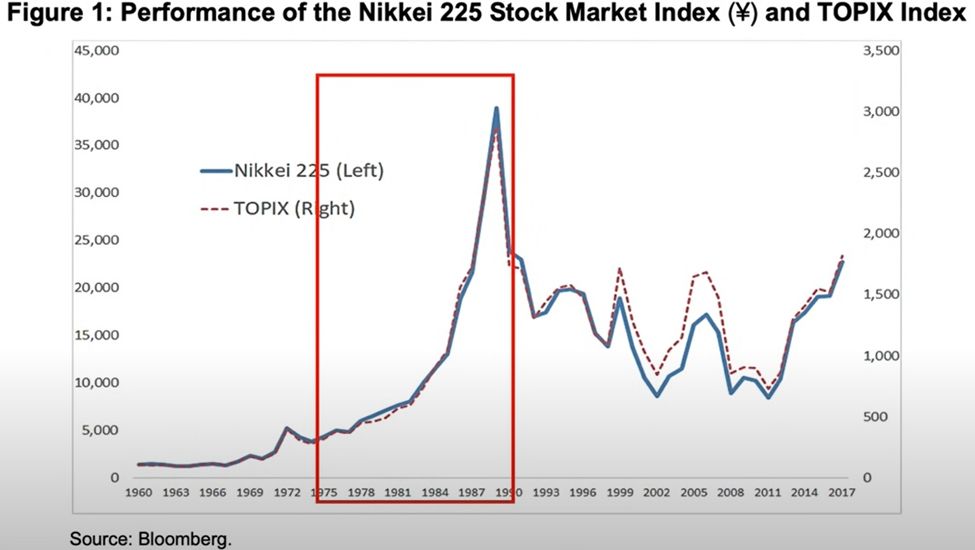
The Yen’s appreciation plunged the Japanese manufacturing sector into recession. In response to this, the Bank of Japan loosened monetary lending policies and lowered interest rates. This cheap money was supposed to be funneled into productive efforts. Instead, it went into stocks, real estate, and asset speculation. This is when Japanese real estate and stocks reached their peak price level.
Between 1985 and 1989, stocks rose in Japan by 240% and land prices by 245%. By the end of the 80s the value of the garden surrounding the Imperial Palace in central Tokyo was worth as much as the entire state of California.
Although Japan is only 1/26th of the size of the United States its land was valued at four times greater. The market value of a single one of Tokyo’s 23 districts, the Central Chiyoda Ward exceeded the value of the whole of Canada.
With asset and stock prices rising inexorably even traditional manufacturers could not resist the temptation to try their hand at playing the markets. Soon they expanded their finance and treasury divisions to handle the speculation themselves. The frenzy reached such proportions that many leading manufacturers, such as the car maker Nissan, made more money through speculative investments than through manufacturing cars.
The Princes of Yen documentary explains: “Many credited the boom in Japan’s economy to high and rising productivity. In reality, Japan’s stellar performance in the 1980s had little to do with management techniques. Instead of being used to limit and direct credit, window guidance was used to create a giant bubble. It was the Bank of Japan who had forced the banks to increasing their lending by so much. The Bank of Japan knew that the only way for banks to fulfill their loan quotas was for them to expand non-productive lending.”
Between 1986 and 1989, Toshihiko Fukui was the head of the Banking Department at the Bank of Japan and would later become the 29th Governor of the Bank of Japan. This was the department that was responsible for the window guidance quotas.
When Fukui was asked by a journalist “Borrowing is expanding fast, don’t you have any intention of closing the tap of bank loans?” Fukui replied “Because the consistent policy of monetary easing continues, quantity control of bank loans would imply a self-contradiction. Therefore, we do not intend to implement quantitative tightening. With structural adjustment of the economy going on for quite a long period, the international imbalances are being addressed. The monetary policy supports this, thus we have the responsibility to continue the monetary easing policy as long as possible. Therefore, it is natural for bank loans to expand.”
In Japan, total private sector land wealth rose from 14.2 trillion yen in 1969, to 2000 trillion yen in 1989.
The Princes of Yen documentary reported: “At his first press conference as the 26th governor of the Bank of Japan, in 1989, Yasushi Mieno said that ‘Since the previous policy of monetary easing had caused the land price rise problems, real estate-related lending would now be restricted.’ Mieno was hailed as a hero in the press to put a stop to this silly monetary policy that was responsible for the increasing gap between the rich and the poor. However, Mieno was deputy governor [of the Bank of Japan] during the bubble era, and he was in charge of creating the bubble.
All of a sudden land and asset prices stop rising. In 1990 alone, the stock market dropped by 32%. Then in July 1991, window guidance was abolished. As banks realised that the majority of the 99 trillion yen in bubble loans were likely to turn sour, they became so fearful that they not only stopped lending to speculators, but also restricted loans to everyone else. More than 5 million Japanese lost their jobs and did not find employment elsewhere. Suicide became the leading cause of death for men between the ages of 20 and 44.
Between 1990 and 2003, 212,000 companies went bankrupt. In the same period, the stock market dropped by 80%. Land prices in the major cities fell by up to 84%. Meanwhile, the Governor of the Bank of Japan, Yasushi Mieno, said that ‘Thanks to this recession, everyone is becoming conscious of the need to implement economic transformation’.”
Between 1992 and 2002, ten stimulation packages worth 146 trillion yen were issued. The thought was domestic demand had to be boosted by government spending and then loan demand would also rise. For a decade the government executed this approach, boosting government debt to historic levels.
Richard Werner remarked “The government was spending with the right hand, putting money into the economy, but the fundraising was done through the bond market, and therefore it took the same money out of the economy with the left hand. There was no increase in total purchasing power, and that’s why the government spending couldn’t have an impact.”
By 2011, Japan’s government debt would reach 230% of GDP, the highest in the world. The Ministry of Finance was running out of options. Observers began to blame the Ministry of Finance (despite the clear sabotage by the Bank of Japan’s actions) for the recession, and started to listen to the voices that argued that the recession was due to Japan’s economic system.
In Japan, the authorities and the Bank of Japan argued, as did the Western powers almost two decades later, that the taxpayer should foot the bill. However, taxpayers have not been responsible for the banks problems, therefore, such policies have created a moral hazard (a moral hazard is a situation where an economic actor has an incentive to increase its exposure to risk because it does not bear the full costs of that risk).
According to the Princes of Yen documentary, Finance Minister Masajuro Shiokawa had turned to the Bank of Japan asking it to help stop deflation, or fight deflation at least. The Bank of Japan consistently defied calls by the government, by the Finance Minister and the Prime Minister of Japan, to create more money to stimulate the economy and end the long recession. At times the Bank of Japan even actively reduced the amount of money circulating in the economy, which worsened the recession. The Bank of Japan’s arguments always came to the same conclusion, namely that the blame lay in Japan’s economic structure.
It should also be noted that a whole generation of Japan’s economists were sent to the United States to receive PhDs and MBAs in U.S. style economics. Since neoclassical economics assumes that there is only one type of economic system, namely, unmitigated free markets, where shareholders and central bankers rule supreme, many Japanese economists quickly came to regurgitate the arguments of U.S. economists.
By the late 1990s, Japan’s economy was heading for the rocks. Ira Shapiro who worked as a U.S. ‘negotiator’ of U.S.-Japan talks during this period stated “Primary sector deregulation is needed to overcome the entrenched interests of large insurance companies, life and non-life, and the Ministry of Finance bureaucracy.”
On Shapiro’s Federalist Society biography page, he is described as playing “a central role in the negotiation and legislative approval of the North American Free Trade Agreement (NAFTA) and the multilateral Uruguay Round that created the World Trade Organization and the current trade rules.”
These U.S.-Japan talks needed to reach an agreement by a deadline decided by the United States. If no agreement were met after the declared deadline, then the U.S. had threatened to impose trade sanctions.
Richard Werner clarified what would be the consequences of Shapiro’s demands to the Japanese; that securitisation of the real estate was being pushed however, in order to have meaningful securitisation we need deregulation, and to get deregulation you have to reduce the power of the Ministry of Finance. This in turn would allow the Bank of Japan, who was under the purview of the Ministry of Finance, to gain power.
From the mid 1990s onwards the Government began to dismantle much of the power structure of the Ministry of Finance. The Bank of Japan, on the other hand, saw its influence grow significantly. The Bank of Japan was cut loose from the Ministry of Finance pretty much making it independent.
Soon after his retirement from the position of governor of the Bank of Japan in 1994, Mieno embarked on a campaign, giving speeches to various associations and interest groups. He lobbied for a change in the Bank of Japan law. His line of argument was to subtly suggest that the Ministry of Finance had pushed the Bank of Japan into the wrong policies. To avoid such problems in the future, the Bank of Japan had to be given full legal independence.
In 1998 monetary policy was put into the hands of the newly independent Bank of Japan.
In early 2001, a new type of politician was swept into power. Junichiro Koizumi became the Prime Minister of Japan. In terms of his popularity and his policies he is often compared to Margaret Thatcher and Ronald Reagan. His message was simply: no recovery without structural reform.
Princes of Yen remarked: “During 2001, the message of no economic growth without structural reform had been broadcast on an almost daily basis on the nation’s TV screens. Japan was shifting its economic system to a U.S. style market economy, and that also meant that the centre of the economy was being moved from banks to stock markets. To entice depositors to pull their money out of banks and into the risky stock market, reformers withdrew the guarantee on all bank deposits, while creating tax incentives for stock investments.
As U.S. style shareholder capitalism spread, unemployment rose significantly, income and wealth disparities rose, as did suicides and incidents of violent crime. Then, in 2002, the Bank of Japan strengthened its efforts to worsen bank balance sheets and force banks to foreclose on their borrowers…Heizo Takenaka [the new Minister for Financial Services] was supportive of the Bank of Japan’s plan to increase foreclosures of borrowers…Takuro Morinaga, a well-known economist in Tokyo, argued forcefully that the Bank of Japan inspired proposal by Takenaka would not have many indigenous beneficiaries, but instead would mainly benefit U.S. vulture funds specialising in the purchase of distressed assets…[When Toshihiko] Fukui’s support for the bankruptcy plan was voiced… [he] was an adviser of the Wall Street investment firm Goldman Sachs, one of the largest operators of vulture funds in the world.”
Richard Werner remarked: “Mr. [Toshihiko] Fukui [29th Governor of the Bank of Japan], and also his mentor Mr. [Yasushi] Mieno [26th Governor of the Bank of Japan], and his mentor Mr. [Haruo] Maekawa [24th Governor of the Bank of Japan], and you’ve guessed it, these are some of the Princes of the Yen that the book is all about. They have said on the record in the 80s and the 90s, ‘What is the goal of monetary policy? It is to change the economic structure.’ Now how do you do that? Well, you need a crisis. They made a crisis in order to change the economic structure.”
The department responsible for the window guidance quotas at the Bank of Japan, was called the Banking Department. The man at the head of this from ‘1986 to ’1989, was Toshihiko Fukui. Mr. Fukui thus directly helped create the bubble. When Fukui had become governor of the Bank of Japan, he would say “While destroying the high-growth model, I am building a model that suits the new era.”
Richard Werner remarked: “They have succeeded on all counts. If you look at the list of their goals, destroy the Ministry of Finance, break it up, get an independent supervisory agency, reach independence for the Bank of Japan itself by changing the Bank of Japan law, and engineer deep structural changes in the economy, by shifting from manufacturing to services, opening up, deregulating, liberalising, privatising, the whole lot.”
U.S. Fomenting “Maiden-Style” Revolution in Country of Georgia. Paying Protesters – Even Ukraine Refugees – To cause “Second War Front” for Russia
The United States is fomenting and facilitating another “color-revolution,” this one in the country of Georgia. Millions of US Dollars are being handed out by the U.S. Embassy to local people for them to protest the Georgia government. The goal is to cause another “color revolution” and thereby cause a second war front against . . . Russia.
Mass protests are taking place in Georgia after the country’s parliament passed a bill designating non-governmental organizations (NGO’s) and media that receive more than 20% of their funding from abroad as “foreign agents”. The people protesting? The foreign agents.
Strange that __their__new law mimics . . . . U.S. Law . . . .
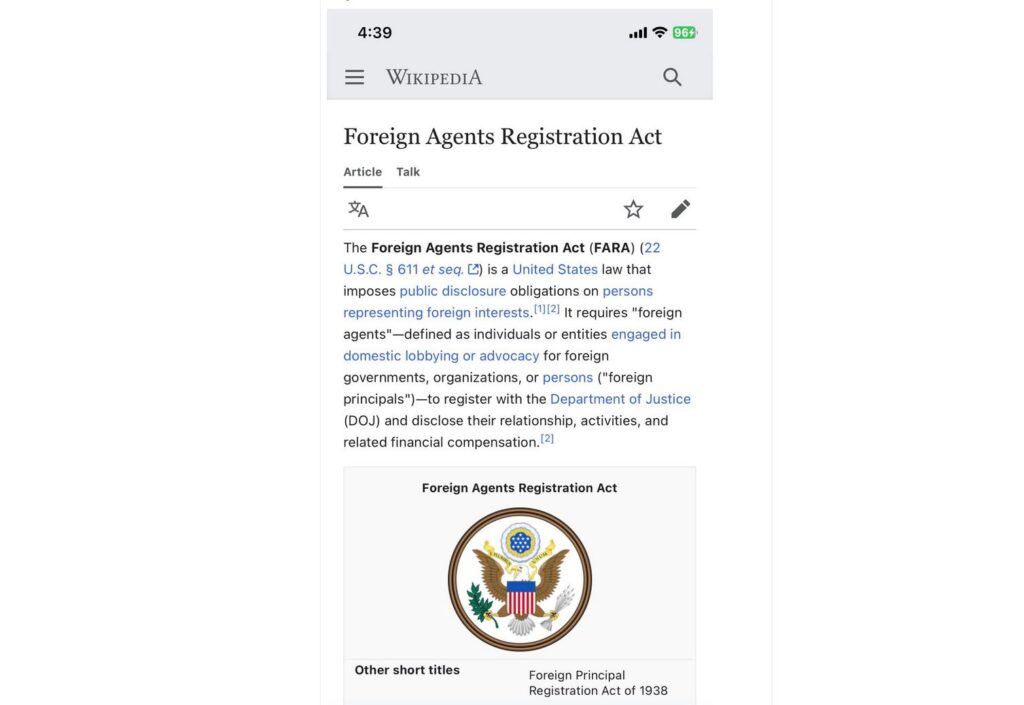
The Protesters are already starting to get violent. Below, they’re taking protective barriers OFF THE BUILDING!
You may have noticed quite a bit of ‘blue/yellow’ lot in the crowd there? Ukraine Refugees!
Another “Maidan”
What is taking place here is another Ukraine-type “revolution” to overthrow the government of Georgia, like the “Maiden” actions inside Ukraine back in 2014. Another Maidan near Russian borders. Preparing another nation as cannon fodder to fight Russia in the interests of London and Washington.
Even the general public sees what’s going on and isn’t staying quiet about it:
and . . .
As seen on the scalable map below, Georgia is to the south of Russia. The apparent goal of the US is to cause more war action to split-apart Russian military might, cause them to have to fight on two fronts, and maybe, just maybe, they can “save” Ukraine in the process.
Even Diplomats see what’s going on and are speaking about it publicly:
Is there no end to the trouble that the United States can cause?
Chinese online mapping platform Amap makes over 300b positioning calls/day using BeiDou satellites
2023-02-20 Global Times Editor:Li Yan Chinese online mapping platform Amap revealed on Saturday that its daily usage of the domestically developed BeiDou Navigation Satellite System (BDS) to make positioning calls had exceeded 300 billion times as of January, and it vowed to expand the application of BDS in the transportation sector. Amap and a spatial-intelligent infrastructure company Qianxun SI have jointly initiated an innovation plan for BeiDou's application in transportation. They aim to combine technical strength and market resources from all walks of life to explore and expand the industrial application of the BDS, according to a statement released by the Beijing Institute of Space Science and Technology Information on Saturday. BeiDou's high-precision service has been deeply integrated into the transportation sector, showing the advantages of more stable positioning signals, higher positioning quality and faster positioning speed, read the statement. It has outpaced Global Positioning System (GPS) and become the top guidance service provider for domestic mapping platforms. Based on the average number of satellites called by domestic navigation apps for each positioning, BeiDou satellites have been called the most, 30 percent more than the second-ranked GPS, the China Media Group reported. BeiDou playing a dominant role in the domestic navigation sector is of great significance. For starters, as a homegrown technology, it is free from external meddling, and it could ensure data and information security. In addition, the positioning quality of BDS has proved in many scenarios to be much better than GPS, Liu Dingding, a Beijing-based veteran market analyst, told the Global Times. The BDS has also been widely used in many industrial and agricultural sectors, from port management and grain production to providing disaster relief. According to the Beijing Institute of Space Science and Technology Information, the BDS has been widely implemented in major domestic ports, including Dalian port in Northeast China's Liaoning Province, Qingdao port in East China's Shandong Province and Guangzhou port in South China's Guangdong Province. The market for BeiDou's smart port application has grown rapidly in recent years, becoming a scientific and technological force boosting ports' development and supporting.....
Photographer by Ruth Orkin Captured Stunning Color Photographs of New York City in the 1950s

Ruth Orkin was a trailblazing photojournalist and filmmaker, whose passion for photography began at a young age. Born in Boston, Orkin grew up in Hollywood during the 1920s and 1930s, and was gifted her first camera, a 39 cent Univex, at the age of 10. It was a gift that would change the course of her life.
h/t: vintag.es









Compilation | Aunt Esther vs. Fred | Sanford and Son
Debt And Compliance
I’ve advised people to get and stay out of debt for a long time, but even so, I didn’t fully understand the affects of debt until the Covid time hit us. As the mayhem spread, I struggled to understand the level of compliance with what would have been, at any other time, criminal medical advice: To take an untested vaccine, and one that didn’t even fit the definition of a vaccine. (Until the definition was rewritten, of course.)
Certainly compliance was driven by massive applications of fear. And, certainly, it was accompanied by exceptional levels of guilt, as in “You’ll be responsible for killing Grandma!” Still, there was more to it, and that extra piece, I soon enough realized, was debt.
If I Had An Economist…
If I had an economist on my payroll, I’d assign them to a very simple task: Go find the relevant data, and correlate levels of debt and levels of compliance. I’d bet large that the correlation would be statistically significant.
Consider the typical police officer: He or she is on the job for benefits and steady paychecks: large American cities aren’t going to stop writing paychecks any time soon, nor will the various police unions let go of the benefit packages that justify them. This exemplary cop, like nearly all police officers, is deeply in debt. They have a mortgage and quite possible a home-equity loan or line of credit. They also have a car loan or two, and credit cards beyond that. There may also be student loans.
So, this typical law enforcer cannot leave their job without facing financial ruin… financial ruin plus a complete loss of place and standing. Such a loss, to them, would be almost an existential crisis. And so, when orders come down from the high-and-mighties, demanding that they comply with a medical regime, the choice they face is between compliance and complete ruin.
And consider the average doctor: Although they make more money than the police officer, they also have a larger home loan, larger car loans, and very definitely larger student loans.
More than that, the independence of physicians was destroyed by Obamacare. And so, the doctors of America were in no better shape than the police officers of America: they could either comply or be ruined. (The situation in other places isn’t generally much better.)
The same, of course, goes for nurses, teachers, and a hundred other types. Nearly everyone in the West, over the past couple of decades, has been stampeded into massive levels of debt. It’s been the only way to keep up a certain level of prosperity and lifestyle. And, of course, it has worked: If you’ve found respectable employment with anything big – corporations, institutions or government – you’ve been able to roll over your debt indefinitely.
And so, when everyone associated with large employers was ordered (seemingly in concert) to take a highly questionable “vaccine,” the majority agonized for a while, and then they complied.
After Compliance
None of this is to say that the people who complied are stupid, weak, or anything of the sort: They were merely under enormous pressure, during a deeply confused moment, submerged in fear. In that situation, they had no choice but to weigh the risks as best they could, then make the choice that seemed to offer the least pain. And so they did.
Now it’s clear that the fear was overplayed, that the “vaccines” didn’t stop anyone from getting the disease, and that there have been both health and financial repercussions. But it wasn’t so clear at the time.
During the mayhem, the people who complied under pressure generally fought those who didn’t, at least if they were vocal about it. After all, they were directly challenging their dignity. Now, however, time has passed and only die-hards (those who profited from the Covid time) are still hammering away with guilt and fear, and the police officers, et al, are sorting things out. By ones and twos they are becoming ready to say that things went too far.
What I hope is that these people will recognize the role that debt played in their choices. Debt was a sword hanging over their heads, and it distorted their decision process.
Out And Away
If we want practical freedom, we need to be free from the influence of debt. The people controlling all that debt have far more power over us than we thought.
As it turns out, the old admonitions to avoid debt weren’t wrong. Debt can undermine our choices and subvert our character. It’s to be used sparingly and carefully at best.
**
AMLO says Mexico is more democratic than oligarch-run USA
VIDEO: Yet ANOTHER Train Derailment; This Time in Oklahoma
Yet another freight train has derailed in the United States; this one in Oklahoma. Thankfully, no apparent injuries or Hazmat Leakage. VIDEO below:
The Wild, Wild West s02e02
https://youtu.be/HG04Nc-1KZQ?list=PLQQ4DpKtNIp-6tVYd4bJlijZYrKyQ9Ktt
Baked English Muffins
These beautiful, high-rising English muffins are baked, not cooked on a griddle. While their interior isn’t filled with the signature fissures of a griddle-baked English muffin, their texture is still craggy enough to trap and hold butter and jam — which is the point, after all.

Ingredients
- 2 1/4 cups King Arthur Unbleached All-Purpose Flour
- 1/2 cup Hi-maize Natural Fiber
- 1 teaspoon salt
- 1 tablespoon Pizza Dough Flavor (optional)
- 2 teaspoons baking powder
- 2 tablespoons granualted sugar
- 2 teaspoons instant yeast
- 1 cup + 2 tablespoons lukewarm milk*
- 2 tablespoons melted butter
- 2 teaspoons vinegar, white or cider
- Cornmeal or semolina to coat the muffins
* Or substitute 1/4 cup (1 1/4 ounces) Bakers’ Special Dry Milk, and 1 cup + 2 tablespoons (9 ounces) lukewarm water; don’t mix them together, the dry milk doesn’t reconstitute.
Instructions
- Stir together all the ingredients except the semolina or cornmeal. Beat for 1 minute at high speed of an electric mixer; the dough will become somewhat smooth.
- Scrape the dough into the center of the bowl, cover, and allow it to rise for about 60 minutes, until it’s quite puffy.
- Grease a large (18 x 13 inch) baking sheet; or line with parchment. Grease twelve 3 3/4″ English muffin rings, and place them on the baking sheet.
- Sprinkle semolina or cornmeal into each ring.
- Turn the dough onto a lightly greased or floured work surface. Cut it into 12 equal pieces; each will weigh a scant 2 ounces, or about 54g.
- Shape the dough into balls. Place each ball into a ring, pressing it down to flatten somewhat. Sprinkle with a bit more cornmeal or semolina, and top with a greased baking sheet (or a sheet of parchment, then the baking sheet). The baking sheet should be resting atop the rings.
- Let the muffins rise for about 60 to 90 minutes, until they’ve puffed up noticeably. While the dough is rising, preheat the oven to 400 degrees F.
- Bake the risen muffins for 10 minutes. Flip the pans over, and bake for 5 minutes more.
- Remove the top pan, and bake for an additional 3 to 5 minutes, until they’re a light golden brown, and the interior of one registers about 200 degrees F on an instant-read thermometer.
- Remove the muffins from the oven, and transfer them to a rack to cool. Remove their rings as soon as you’re able.
- When completely cool, store muffins in a plastic bag.
Yield: 12 muffins | Hands-on: 20 to 32 min | Bake: 25 to 30 min
Recipe and photo used with permission from: King Arthur Flour
Fantasy island Skater’s Edge Concerto of Death
FIRST TIME HEARING Cheech & Chong – Basketball Jones REACTION
Wholly smokes!
This is actually the original. Parodied the song “Love Jones” by Brighter Side of Darkness



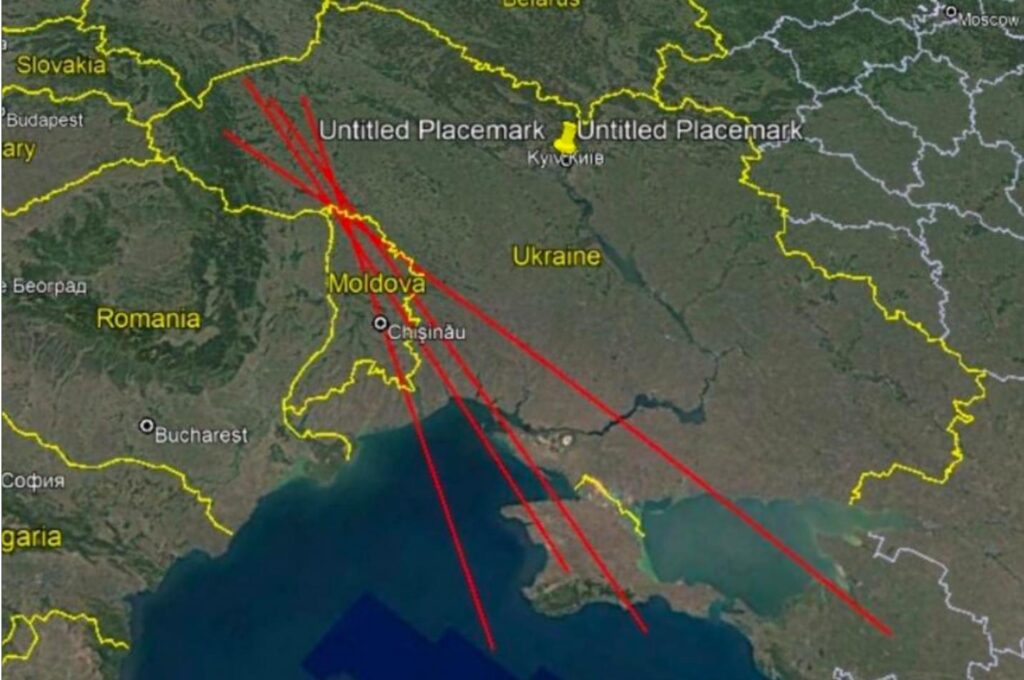
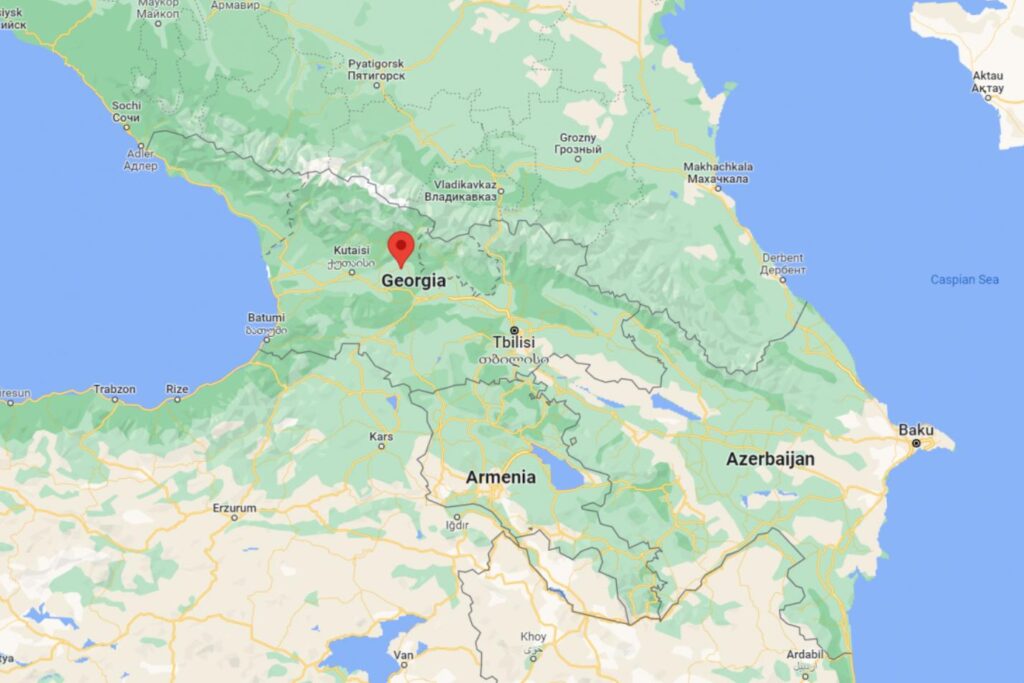

In the video “I saw the future of mankind,” Bill talks about how he was shown the parts of his life where he caused pain to others. In particular, he caused a lot of pain to his wife when he left her. What would be the point of showing this to Bill? Is this a punishment inflicted on a person for causing someone else pain? Will I have to go back and repeat the bad parts until I get them right and do not cause someone else to experience pain? Sometimes there is no way to avoid causing that pain to another person except for staying in the situation that causes yourself pain. If you have to go back and repeat in an effort to correct these things every time, it seems like you would be stuck in an endless loop and would never get out of this cycle.
The way reality has been set up prior to the old regime being upended, conflict and betrayal is absolutely inevitable in your life if you live in the West. So yes, I agree with you that it could be viewed as pointless for Bill to view the bad parts of his history… if you realize that all experiences, both good and bad, are a part of your pre-life template (and if you’re been using prayer affirmations, they’re a corollary of your affirmations manifesting).
So, more likely than not, it was to give him a clear view of his entire life template instead of focusing on just the good aspects of it.
The “G” stands for Gorgeous.
~~~
“But I don’t listen to her cuz my head is like a sieve.” Solid lyrics from BBJ.